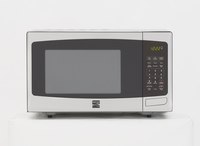
Photo from wikipedia
PET beverage bottles have been recycled and safely reprocessed into new food contact packaging applications for over two decades. During recollection of post-consumer PET beverage bottles, PET containers from non-food… Click to show full abstract
PET beverage bottles have been recycled and safely reprocessed into new food contact packaging applications for over two decades. During recollection of post-consumer PET beverage bottles, PET containers from non-food products are inevitably co-collected and thereby enter the PET recycling feed stream. To explore the impact of this mixing on the safety-in-use of recycled PET (rPET) bottles, we determined the concentrations of post-consumer substances in PET containers used for a range of non-food product applications taken from the market. Based on the chemical nature and amounts of these post-consumer substances, we evaluated their potential carry-over into beverages filled in rPET bottles starting from different fractions of non-food PET in the recollection systems and taking worst-case cleaning efficiencies of super-clean recycling processes into account. On the basis of the Threshold of Toxicological Concern (TTC) concept and Cramer classification tools, we present a risk assessment for potential exposure of the consumer to the identified contaminants as well as unidentified, potentially genotoxic substances in beverages. As a result, a fraction of 5% non-food PET in the recycling feed stream, which is very likely to occur in the usual recollection systems, does not pose any risk to the consumer. Our data show that fractions of up to 20%, which may sporadically be contained in certain, local recollection systems, would also not raise a safety concern.
Journal Title: Molecules
Year Published: 2020
Link to full text (if available)
Share on Social Media: Sign Up to like & get
recommendations!